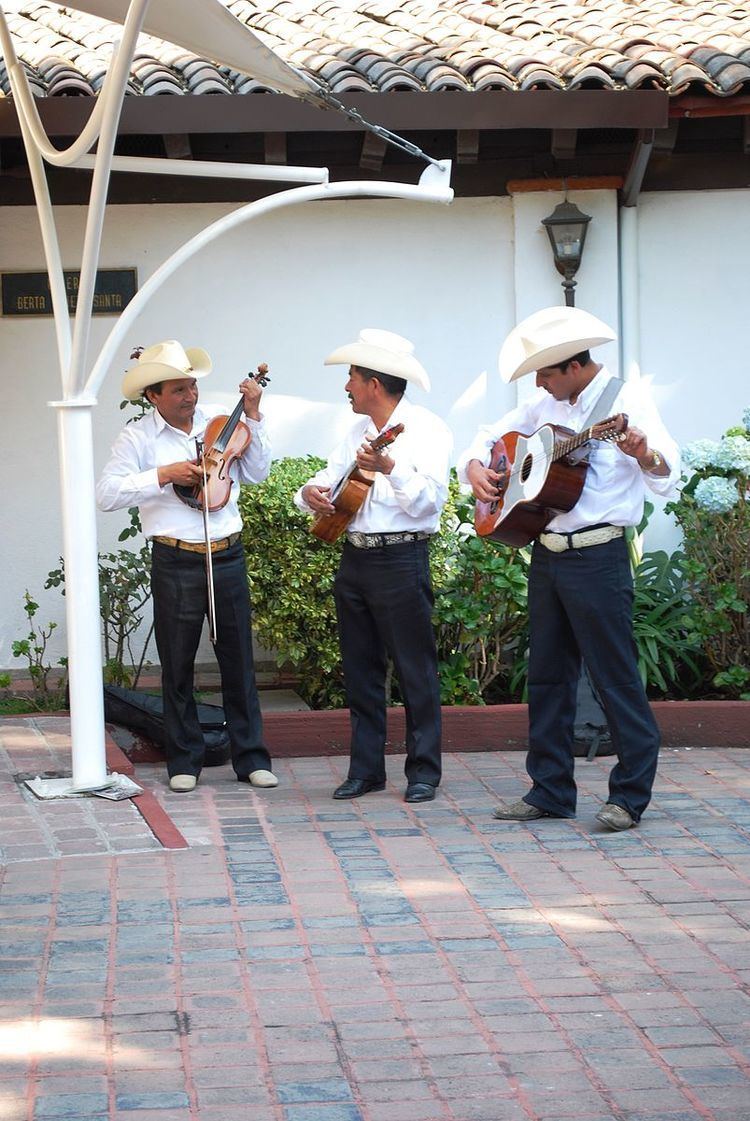 | ||
Cultural origins 18th century Sierra Huasteca Typical instruments Violin, Guitarra huapanguera, Jarana | ||
Son Huasteco is one of 8 Mexican song styles and is a traditional Mexican musical style originating in the 6 state area of Northeastern Mexico called La Huasteca. It dates back to the end of the 19th century and is influenced by Spanish and indigenous cultures. Usually it is played by a Trio Huasteco composed of a guitarra quinta huapanguera (a five course, eight stringed guitar-like instrument) a Jarana huasteca (a stringed instrument related to the jarana) and a violin. Singers will often use the falsetto register. The son Huasteco is particularly noteworthy for its flamboyant and virtuoso violin parts, although the style varies from state to state. Footwork often danced to Son Huasteco is the Zapateado. Improvisation plays a strong role in the style, with musicians creating their own lyrics and arrangements to a standard repertoire. Typical sones huastecos are "Cielito lindo", "La huazanga", "La sirena", "El querreque" and "La cigarra".
Related genres are Son Jarocho and Fandango español.
